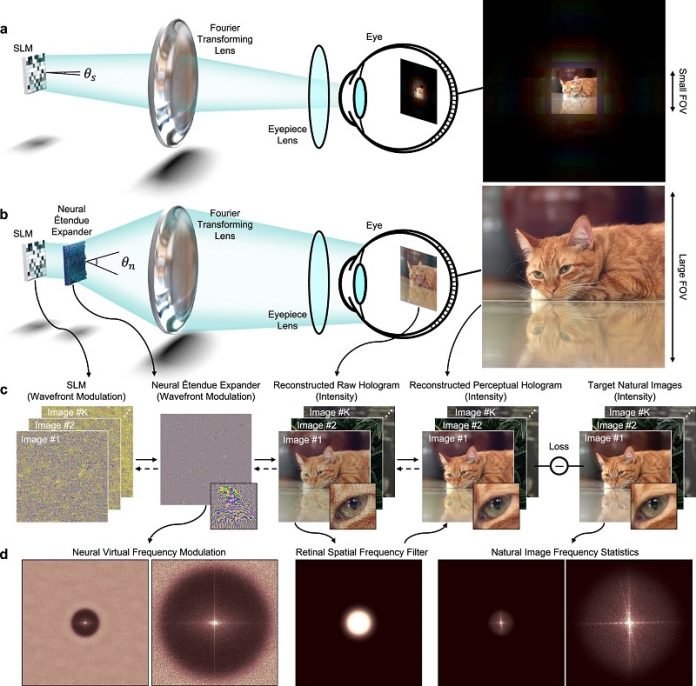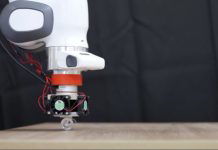
Thanks to advancements in 3D holographic technology, researchers from Princeton University are paving the way for a future where virtual and augmented reality can be experienced through a simple pair of glasses.
Unlike traditional monitors that can only simulate depth, holographic images provide a true three-dimensional view, blending seamlessly with our natural perception of the world.
This breakthrough study, detailed in the paper “Neural étendue expander for ultra-wide-angle high-fidelity holographic display” published in Nature Communications, introduces a promising approach to holographic displays that could one day replace bulky virtual reality headsets with something as lightweight and convenient as everyday eyewear.
Holographic displays create images with real depth, allowing for a much more immersive experience than traditional 2D screens.
“Imagine not having to sit in front of a large cinema screen to get a full immersive experience; holographic technology could soon make that a reality,” explained Felix Heide, an assistant professor of computer science at Princeton and senior author of the study.
Current virtual reality systems require heavy and cumbersome headsets packed with screens and electronics.
However, the technology developed by Heide and his team uses optical elements small enough to be integrated into regular glasses.
This could revolutionize how we interact with digital information, making it accessible in everyday activities, from driving to performing complex surgeries or household repairs.
One of the main challenges in developing practical holographic displays has been the tradeoff between the size and clarity of images. Earlier versions produced images that were either small and sharp or large and blurry, limiting the viewer’s field of vision and disrupting the immersive experience.
“If you tried to look towards the edges, the image might disappear,” noted Nathan Matsuda, a research scientist at Meta and co-author of the paper.
To address this issue, the team engineered a new type of optical element that works alongside the spatial light modulator, the device responsible for generating holographic images.
This new element functions similarly to a piece of custom-designed frosted glass, with a specific pattern etched into it that scatters light in a precise manner. This innovation expands the field of view while maintaining the stability and quality of the holographic image.
Despite these advances, there are still obstacles to overcome, such as perfecting image quality and streamlining the manufacturing process for the new optical components. Nonetheless, the researchers are optimistic.
“This research shows a path forward,” said Heide, suggesting that the integration of various technologies could soon make practical holographic displays a reality.
This development not only hints at the future of personal electronics but also underscores a significant leap towards more interactive and immersive digital experiences.



